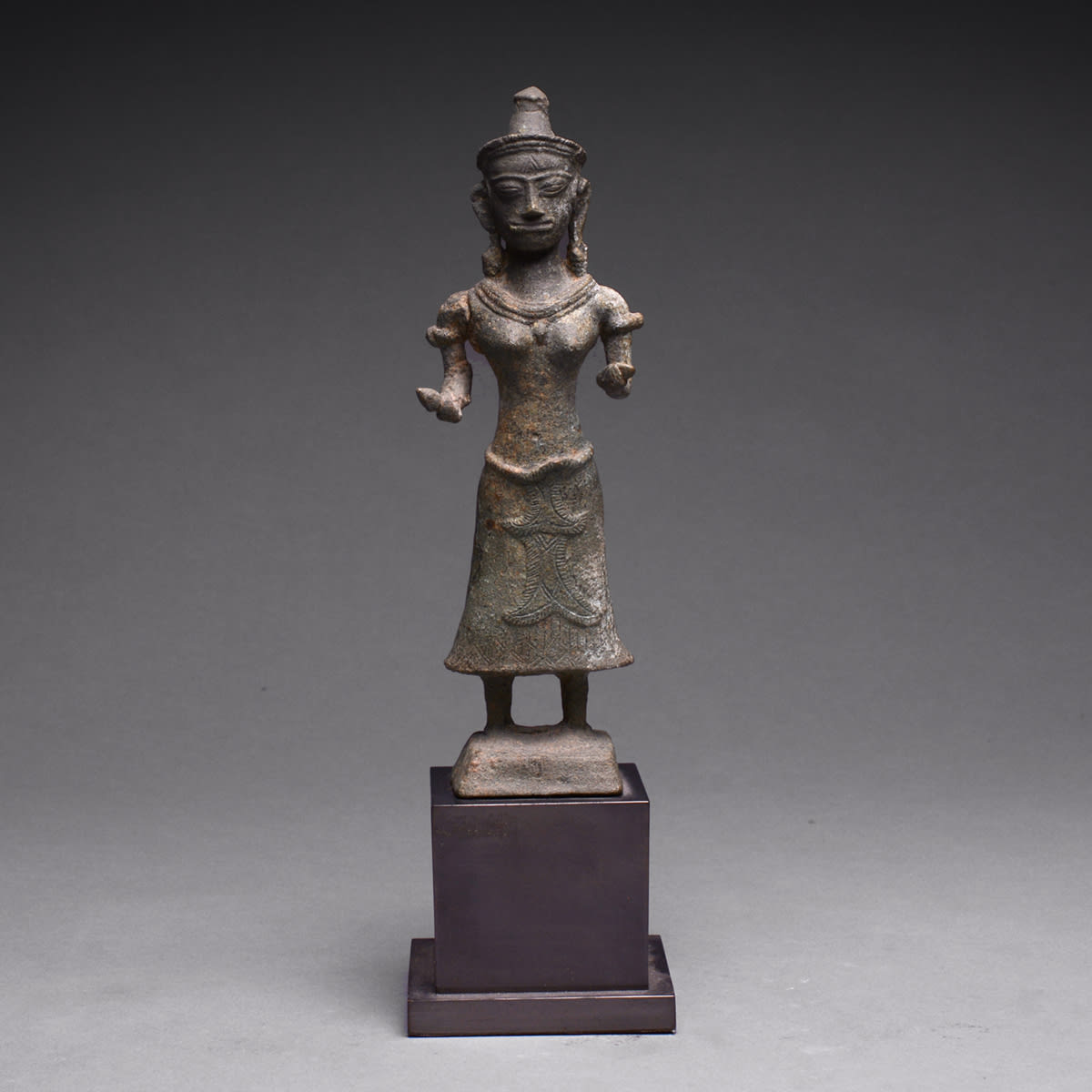Khmer Bronze Sculpture of Uma, 13th Century CE
Bronze
height 19.1 cm
height 7 1/2 in
height 7 1/2 in
X.0231
Further images
The Khmer civilization, today embodied by the temples and ruins of Angkor, one of mankind's most astonishing and enduring architectural achievements and the largest religious monument in the world, flourished...
The Khmer civilization, today embodied by the temples and ruins of Angkor, one of mankind's most astonishing and enduring architectural achievements and the largest religious monument in the world, flourished from 802-1431 A.D. From the great citadel of Angkor, the kings of the Khmer empire ruled over a vast domain that reached from what is now southern Vietnam to Yunan, China and from Vietnam westward to the Bay of Bengal. The original city was built around the Phnom Bakeng, a temple on a hill symbolizing the mountain that stands in the center of the world according to Hindu cosmology. Successive kings enlarged the city, building other temples devoted to various Hindu deities and large reservoirs used for irrigation, which also symbolized the ocean surrounding the holy central mountain. The greatest of the Ângkôr temple complexes is Angkor Wat, constructed under King Suryavarman II (reigned 1113-1150) to celebrate the king as the incarnation of the god Vishnu.
The goddess Uma, also known as Parvati, daughter of the mountains, was the consort of Shiva. When she finally attracted Shiva, after a long and physically grueling courtship, he shared with her the secrets of the world, a conversation that would lead to the dispersal of this elite knowledge amongst the wise. Shiva’s exploits were represented on the relief carvings of Angkor Wat, the center of the Khmer dynasty and the largest religious monument in the world. Thus, Uma was a favored goddess of Khmer artists for her important stature in the Hindu hierarchy. This extraordinary bronze sculpture depicts the goddess standing straight, adorned by a floral diadem and necklace. The intricate carving of her conical coiffure imitates the form of a lotus bulb. Her ears droop down to her shoulders from the weight of her ear ornaments. She wears two bands high up on her arms. Her voluptuous torso is exposed while a long, pleated sarong covers her lower body. A slight over-fold wraps around her waist and a central sash falls in two layers between her legs, tapering off in a curving fishtail shape. The sensuous form of the goddess recalls a timeless beauty. Her sumptuous jewelry further attests to this elegance. It is clear from this sculpture why Shiva, the destroyer and recreator of the universe, chose to love this woman.
The goddess Uma, also known as Parvati, daughter of the mountains, was the consort of Shiva. When she finally attracted Shiva, after a long and physically grueling courtship, he shared with her the secrets of the world, a conversation that would lead to the dispersal of this elite knowledge amongst the wise. Shiva’s exploits were represented on the relief carvings of Angkor Wat, the center of the Khmer dynasty and the largest religious monument in the world. Thus, Uma was a favored goddess of Khmer artists for her important stature in the Hindu hierarchy. This extraordinary bronze sculpture depicts the goddess standing straight, adorned by a floral diadem and necklace. The intricate carving of her conical coiffure imitates the form of a lotus bulb. Her ears droop down to her shoulders from the weight of her ear ornaments. She wears two bands high up on her arms. Her voluptuous torso is exposed while a long, pleated sarong covers her lower body. A slight over-fold wraps around her waist and a central sash falls in two layers between her legs, tapering off in a curving fishtail shape. The sensuous form of the goddess recalls a timeless beauty. Her sumptuous jewelry further attests to this elegance. It is clear from this sculpture why Shiva, the destroyer and recreator of the universe, chose to love this woman.







